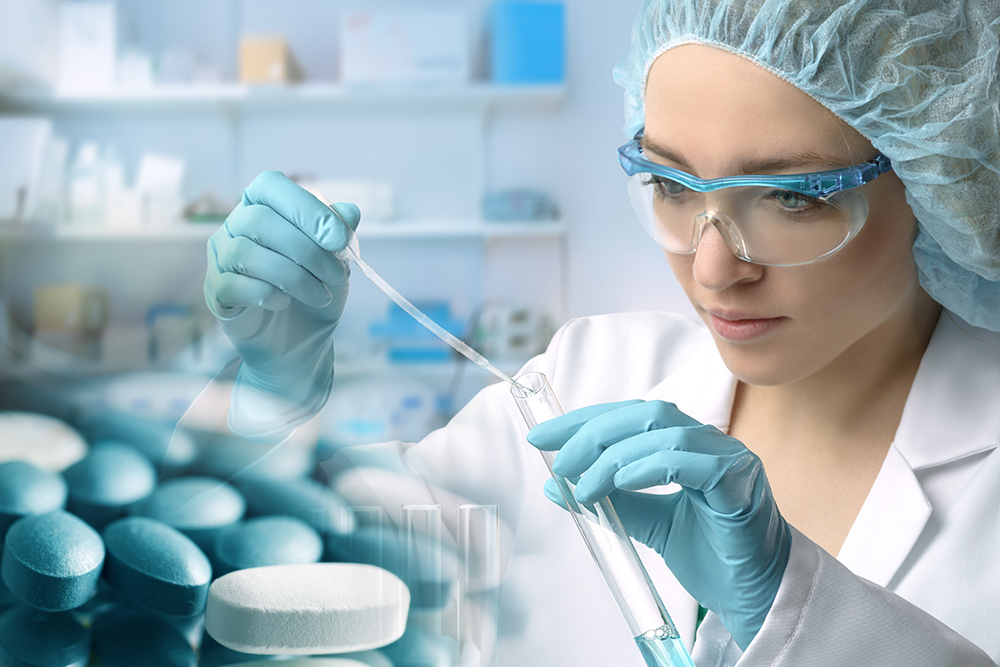

Novel Bacterial Alkaloid Compound Discovered Near Pacific Island of Saipan
A research expedition to the Pacific island of Saipan, in the Northern Islands of Mariana, led to the discovery of a bacterial extract with high anti-cancer potency. Within the extract was a novel alkaloid compound, which the researchers studied using nuclear magnetic resonance (NMR) technology.1
Lead author Dr. Chen Zhang and colleagues at the University of California, San Diego, traveled to the island of Saipan in 2013, where they collected a purple-pink, filamentous cyanobacteria of the species cf. Caldora penicillata from the shallow waters of Lau Bay. They performed biochemical and NMR techniques to determine the composition, structure and toxicity profile of the bacterial extract and compounds within it. The authors published their findings in the journal Marine Drugs in April, 2017.
Cyanobacteria, named for their color, are a blueish bacterium that use photosynthesis to turn the sun’s light into energy, and are known to produce toxic chemicals.2 Pacific tropical islands have long been a source of diverse biological studies, and researchers have identified many bioactive natural products from cyanobacteria in these areas.3 The island of Saipan has been less extensively studied, however, one potent anti-cancer agent was discovered within cyanobacteria living amongst the coral reefs off the islands’ shores.4
After finding these specimens of caldora penicillate, the researchers prepared an extract from the cyanobacteria and characterized the compounds within it. The extract was cytotoxic in a brine shrimp model system, spurring further efforts to reveal the specific agents causing this toxicity as potential anti-cancer lead compounds for drug development efforts. Out of this extract, the authors discovered laucysteinamide A, a novel thiazoline-containing alkaloid compound.
Using the Bruker ALPHA-P FTIR and Bruker 600 MHz NMR spectrometers, the researchers used NMR and other advanced techniques to determine the structure and biological activity profile of this new compound.
Laucysteinamide A was found to be a monomeric structural analogue of the dimeric molecule somocystinamide A, which is a cytotoxic compound first isolated from cyanobacteria in Fiji.5 Laucysteinamide A was determined to be present in the 2R absolute conformation. The authors also note the compound could logically be derived from several amino acid residues, and state that the compound’s assembly likely occurs through a hybrid PKS/NRPS pathway. The structural analysis determined by NMR gave the researchers a clue as to the potential activity of their novel compound, and its toxicity was assessed in their research efforts as well.
The cytotoxicity profile of laucysteinamide A was found to be quite weak (IC50 = 11 µM in the H-460 human non-small cell lung cancer cell line). Despite structural similarities, its toxicity is significantly weaker than somocystinamide A (IC50 = 3 nM in the Jurkat Leukemia cell line),2 causing the researchers to conclude that the majority of the crude extract’s cytotoxicity derived from the presence of curacin D, a previously described lipid produced by cyanobacteria.6
While this novel compound is not a remarkable anticancer lead candidate, it may be possible to improve its toxicity profile with rational drug design methods. Importantly, this research highlights the possibilities that NMR technology offer to researchers in the drug discovery pipeline, and novel natural products discovered in the future will depend upon NMR instrumentation to determine their therapeutic potential.
References:
- Zhang, Chen, Naman CB, Engene N, et al. Laucysteinamide A, a Hybrid PKS/NRPS Metabolite from a Saipan Cyanobacterium, Cf. Caldora Penicillata. Marine Drugs. 2017;15:1-11.
- World Health Organization. Toxic Cyanobacteria in Water: A guide to their public health consequences, monitoring and management. 1999. http://www.who.int/water_sanitation_health/resourcesquality/toxcyanchap2.pdf.
- Blunt JW, Copp BR, Keyzers RA, et al. Marine natural products. Nat Prod Rep. 2015;32:116–211.
- Williams PG, Yoshida WY, Moore RE, et al. Isolation and structure determination of obyanamide, a novel cytotoxic cyclic depsipeptide from the marine cyanobacterium Lyngbya confervoides. J Nat Prod. 2002;65:29–31.
- Nogle, L.M.; Gerwick,W.H. Somocystinamide A, a novel cytotoxic disulfide dimer from a Fijian marine cyanobacterial mixed assemblage. Org. Lett. 2002, 4, 1095–1098.
- Marquez B, Verdier-Pinard P, Hamel E, et al. Curacin D, an antimitotic agent from the marine cyanobacterium Lyngbya majuscula. Phytochemistry. 1998;49:2387–2389.

